In the early 1990s, Apple was determined to show it could continue to build computers in the United States as part of its strategy of keeping tight control over every aspect of design and production. Macintosh computers rolled off the line at one Apple factory “like a Holiday Inn toaster turns out toasted bagels,” according to a biography of Steve Jobs.
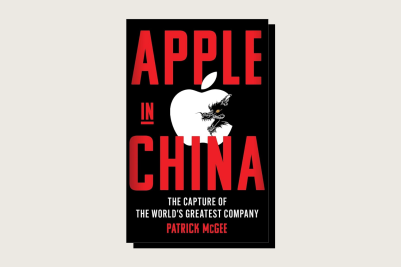
But facing bankruptcy in 1996, the company sold its Mac factory in Colorado to a U.S. contract manufacturer and started down a long road of outsourcing manufacturing, first in the United States and later in Asia. It now builds most everything it sells in China. Outsourcing has been incredibly lucrative for Apple, helping to make it one of the three most valuable companies in the world, as measured by market capitalization. But it also has made Apple frighteningly dependent on the shifting whims of Chinese politics and the priorities of Chinese leader Xi Jinping.
Apple in China: The Capture of the World’s Greatest Country, by former Financial Times reporter Patrick McGee, who has long covered Apple, tells the tale of this Faustian bargain in bold, vivid strokes. It’s a great read and an informative guide to how Apple and China truly operate—one that global leaders (and Silicon Valley bigwigs) should pay heed to.
“It would be banal to say that Apple wouldn’t be Apple today without China,” McGee writes. “What this book contends is more intriguing—that China wouldn’t be China today without Apple.” Hyperbolic to be sure, but McGee makes his case convincingly.
The secret sauce to Apple’s outsourcing is what McGee calls “the Apple Squeeze.” To make sure foreign factories can meet Apple’s exacting standards, Apple flies in its engineers to “rigorously train local partners” how to mass produce new technology items at low prices, and “in the process giving away manufacturing knowledge.” In exchange, contractors charge Apple lowball prices and operate at the thinnest of margins, or sometimes no profit at all.
As demanding as Apple is, it has plenty of suitors. Contractors know they can use the knowledge and prominence they gain from working with Apple to win contracts from other companies willing to pay higher prices. Beijing encourages Chinese firms to work with Apple, McGee argues, because it understands that Apple is providing a massive transfer of manufacturing knowhow. Over the years, Apple has trained a huge cadre of Chinese engineers and managers, and its contractors have employed millions of Chinese workers.
McGee calls Apple “the world’s largest manufacturer without owning factories.”
A couple of caveats before we continue: Apple in China tells the Apple story as a heroic tale. McGee describes the celebrated CEOs—Apple’s Steve Jobs and Tim Cook, Foxconn’s Terry Gou—as brilliant and demanding, and their underlings as perfectionist and hard-driving. If any of them have faults, it’s arrogance and ignoring their families. This sometimes gets to be too much, like listening to a person who says his biggest flaw is that he works too hard.
There also isn’t a word in the book about how Apple and its Silicon Valley compadres who shed factory jobs in the U.S. contributed to the shock of soaring Chinese imports. McGee is nearly as silent about horrendous working conditions at some of Apple’s China suppliers. For instance, he chides journalists for focusing too much on suicides at Foxconn, Apple’s biggest contract supplier in China, and missing the bigger story of Apple’s progress in China.
-
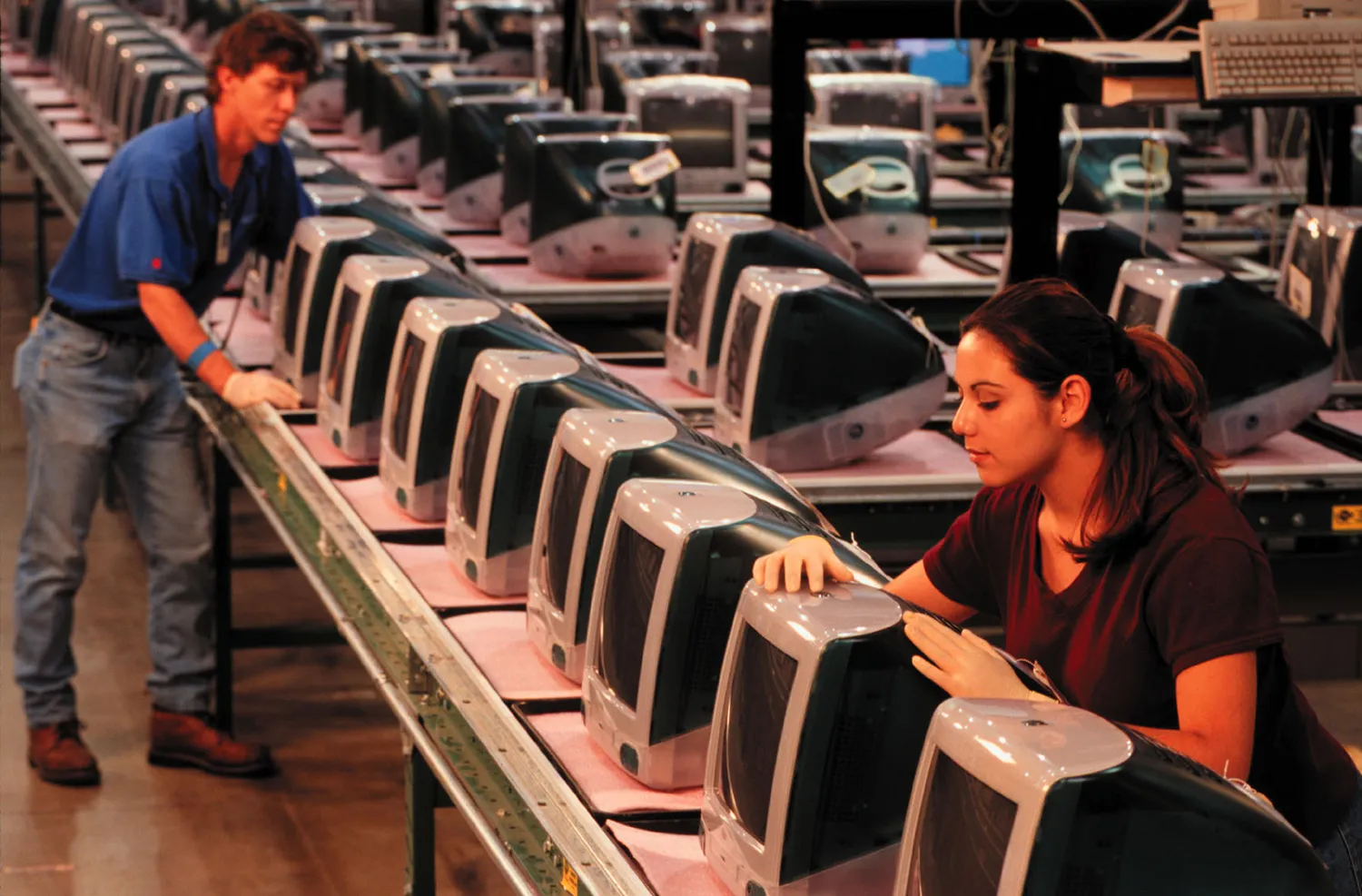
Rows of vintage iMac computers with a worker behind one of them.
-
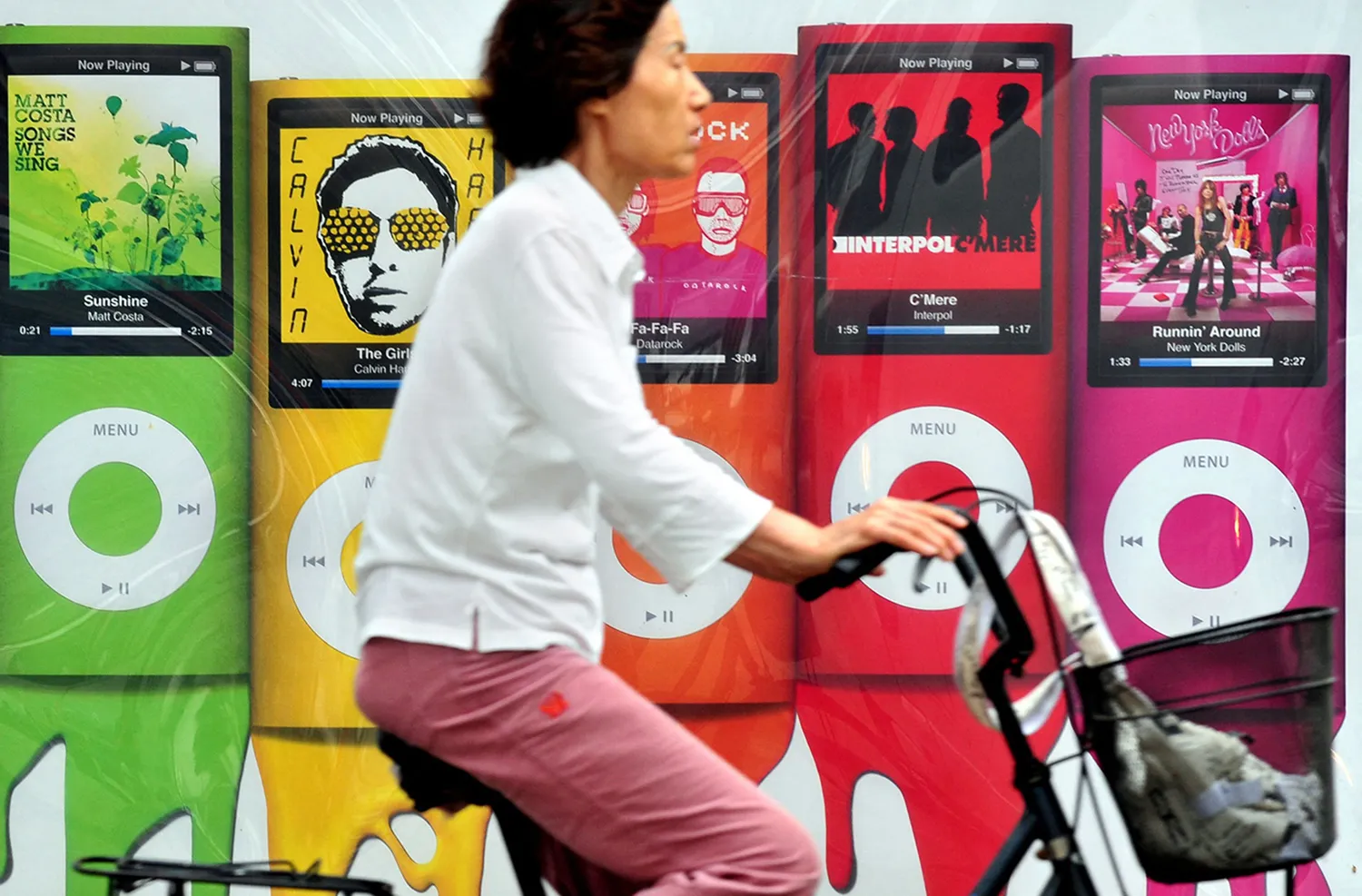
A person a bicycle rides pass a billboard displaying colorful iPod devices.
“Periodic exposes helped to shine a light on working conditions and likely caused some positive change,” he writes. “But the media’s forays into what Apple was up to overlooked wider questions of company strategy, business development, and the management of product cycles.”
Still, the story McGee does tell—Apple’s growth in China and its impact on the country—he tells well. He manages to turn supply chain decisions into high drama and make injection molding seem sexy.
Starting in the mid-1980s, Apple experimented with foreign contract manufacturing. It turned to Canon in Japan to produce its first laser printer, the LaserWriter. Japanese firms also produced some Apple laptops and the Newton, a disaster of a product that used a stylus to take notes and send emails.
It wasn’t until Apple lurched toward bankruptcy in the mid-1990s that it turned fully to outsourcing. It dabbled with manufacturing in South Korea, Singapore, Ireland, Wales, and Mexico. But it hit paydirt in Taiwan with Foxconn, whose CEO, Gou, was as obsessive and perfectionist as Jobs.
But Taiwan’s worker population was limited, as was its space for expansion. Gou, a leader in the generation of Taiwanese CEOs who invested heavily in China, shifted Apple production to the mainland. There the working population seemed unlimited, and the government offered subsidies, infrastructure, and the necessary working conditions for success—meaning that it cracked down on independent worker associations and turned a blind eye to child labor and scandalous overtime demands. Apple consolidated its manufacturing, which had been spread all over Asia, into China.
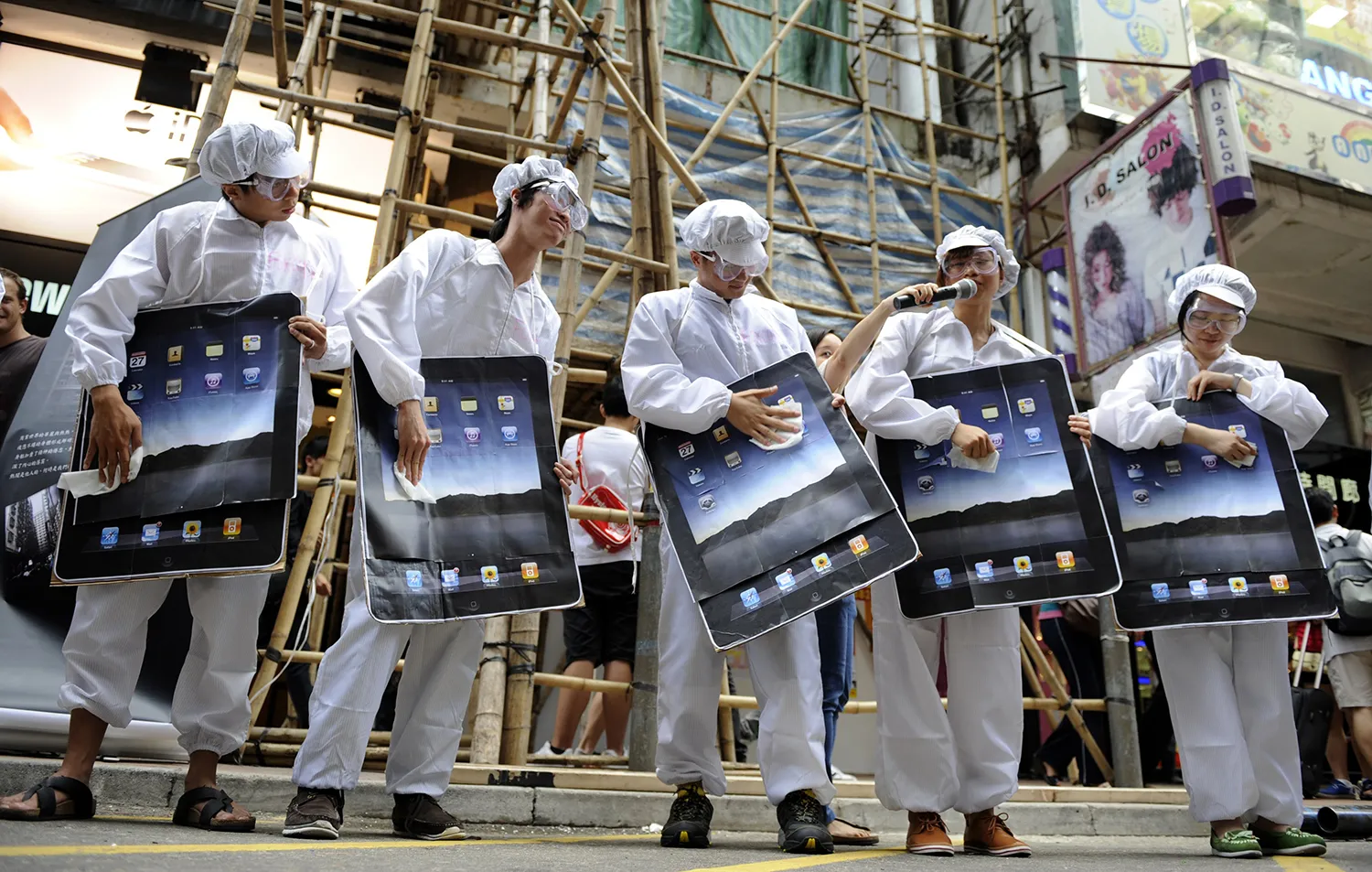
A huge cheap labor pool was crucial. The work was so tedious and competition for labor so intense that turnover in electronics contract manufacturers could reach 300 percent to 400 percent annually.
Of course, many other Western companies were lured to China along with Apple, often in joint venture arrangements, which became a way for local partners to purloin Western technology. Apple worked hard to avoid that trap.
In California, Apple designers came up with innovative products like the iPod and iPhone which didn’t use off-the-shelf parts. Apple trained local firms to produce advanced components at scale and low price but also limited their ability to copy Apple products. One way was by purchasing the expensive computerized machinery necessary to make Apple products for contract manufacturers—and making sure the manufacturers used them only for Apple.
Apple’s engineers tried to imbue Chinese manufacturers with Apple’s perfectionism while protecting Apple’s intellectual property. “Instead of selecting components off the shelf,” McGee writes, “Apple was designing custom parts, crafting the manufacturing behind them, and orchestrating their assembly into enormously complex systems” that were difficult to replicate. The idea, McGee says, was to “build moats around its manufacturing innovations.”
When it came to dealing with China’s complex political system, Apple initially relied on Gou, or Uncle Terry, as he was known in Apple. Gou understood how Beijing operated and was a pro at scoring the free land, infrastructure, and other subsidies that local governments gave to manufacturers. Officials’ careers benefitted from factories that hired loads of local workers and furthered the central government’s goal of improving electronics manufacturing. Pleasing Beijing meant promotions for the local officials Gou wooed.
But by around 2013, Apple had gotten so big in China that it started to attract unwanted attention and was sometimes portrayed in the local media as a bullying Western company, particularly as China’s new leader, Xi Jinping, consolidated power, and U.S.-China relations began to crater. Apple assembled what it called “the Gang of Eight”—managers with China experience—to try to manage dicey political relations. They learned the difference between the Western notion of “rule of law,” where courts are supposed to deal out verdicts impartially, and the Chinese practice of “rule by law,” where the Communist Party sets the rules, McGee shows. As the CCP sees it, it’s their law, they rule.
Apple’s enormous reliance on China for manufacturing, which had fattened its bottom line, had begun to become a weakness it had to address. Apple tried a variety of tactics.
When Beijing asked Apple to remove apps from its Chinese App Store, Apple dropped the New York Times and 674 different VPN apps that had enabled Chinese users to jump the Great Firewall of China and download banned content. But Apple wouldn’t go so far as to ban the Times from its global App Store, as China requested.
Apple also invested in Chinese companies that it thought were favored by the government, including the ride-sharing company Didi Chuxing, and chipmaker YMTC. It chose impoverished Guizhou province for a new data center because it bet the governor there would be appointed to the ruling Politburo Standing Committee. (He wasn’t, and Apple dropped the project in 2022.)
It also started shifting away from Taiwanese-owned manufacturers to Chinese-owned ones, creating what McGee calls a “red supply chain.” Meanwhile in meetings with Chinese officials, Apple execs stressed how it was transferring manufacturing technology to China and claimed it was investing $55 billion annually in the country, and in 2016 told Chinese officials it planned to spend $275 billion over five years, although McGee doesn’t clearly explain how it arrived at those numbers.
-
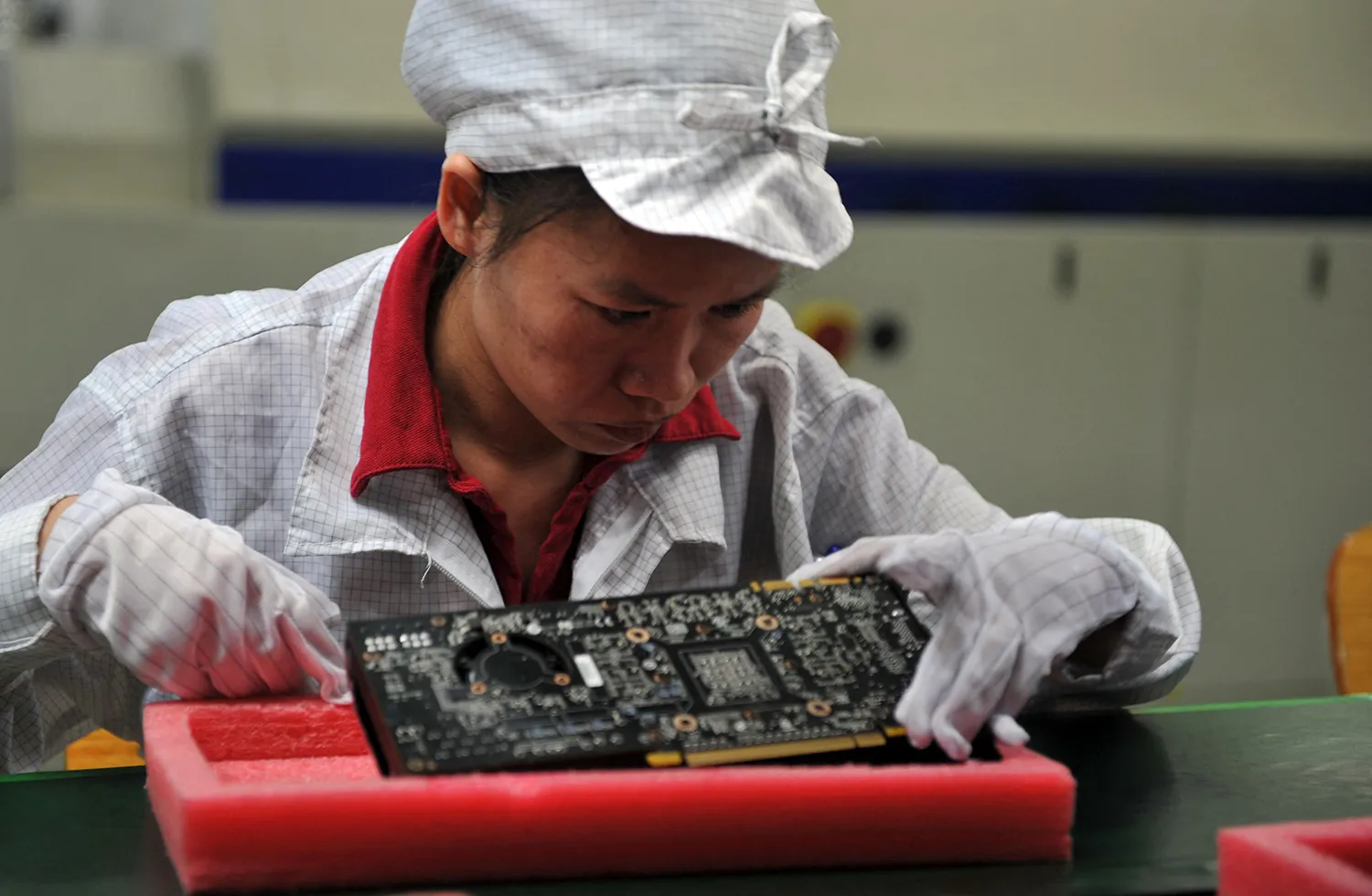
A worker wearing a white hat and white gloves leas in to look at a motherboard.
-

Two factory workers in pink uniforms and white caps look at knockoff Apple watches on a factory floor.
Apple sought to show it was in lockstep with Xi’s vision of turning China into a technology superpower. “The technology transfer that Apple facilitated made it the biggest corporate supporter of Made in China 2025,” Beijing’s controversial plan to make China a global leader in crucial technologies, McGee writes.
How did Apple manage to do all this without becoming a pariah in Washington? Sadly, McGee has little to contribute on that end. He notes that Cook met fairly regularly with Donald Trump during his first term, but he doesn’t have details on what they discussed. Apple products were among those exempted from tariffs during Trump’s first trade war with China. Coincidence? The reader is left to wonder.
Trump 1.0 also did Apple a huge favor by barring exports of advanced semiconductors to Apple’s most formidable Chinese competitor, Huawei. For a time, Huawei’s revenues plummeted, although it has recovered since then. Was Apple simply a lucky bystander to Washington’s crackdown or did Cook push Trump in that direction? McGee leans toward the former explanation but given that Cook appears to leave nothing to chance, that seems unlikely.
Another Apple priority was reducing its reliance on chips produced in Taiwan by Taiwan Semiconductor Manufacturing Co. (TSMC). From my own reporting, I know that Apple was pushing TSMC to bring some of its manufacturing to the United States, which it is in the process of doing after the United States awarded it billions of dollars in subsidies through the CHIPS Act.
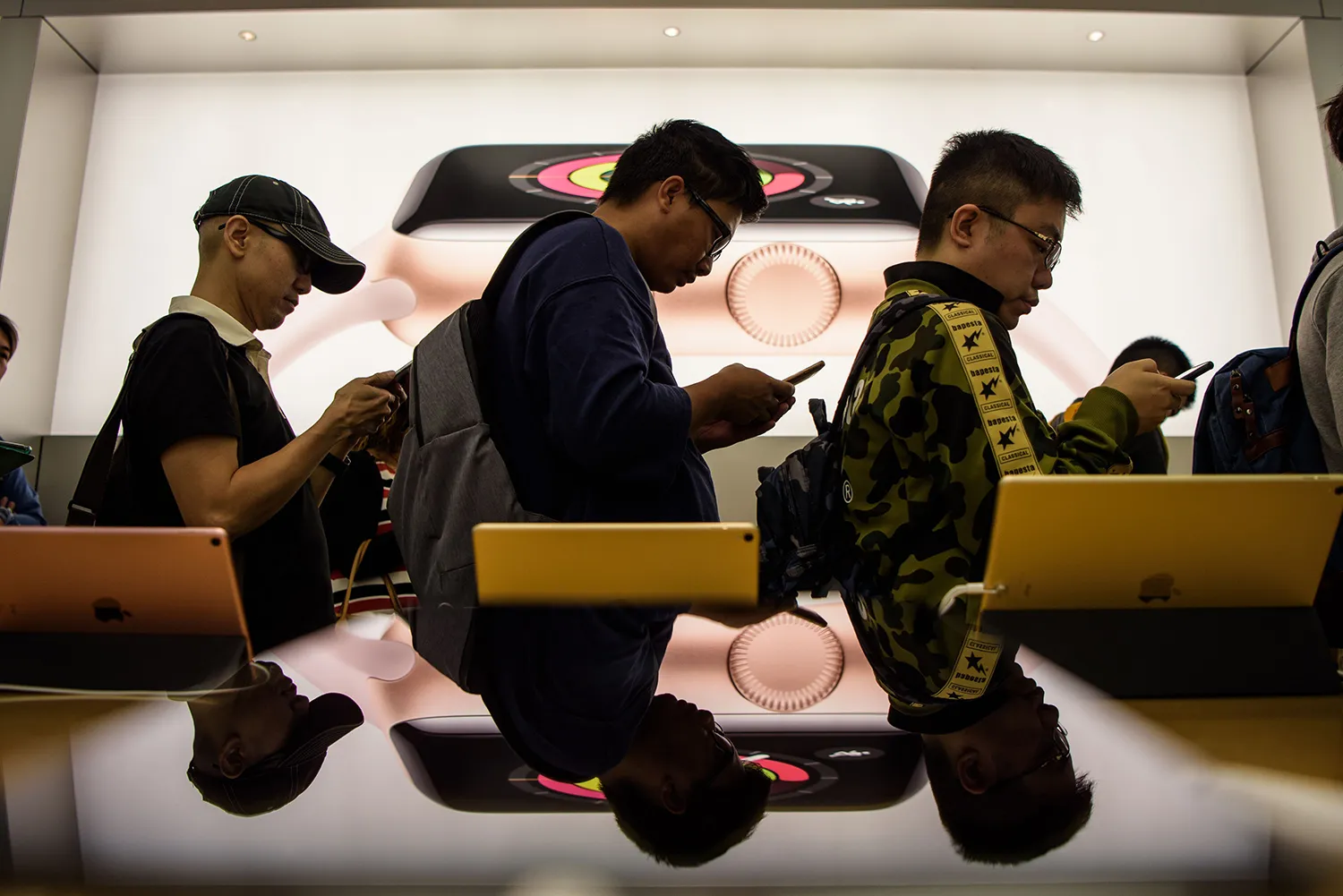
Of course, the book was finished before Trump’s latest trade war, so it can’t tackle recent events. Apple products, like other electronic goods, were exempted from most of the super-high tariffs Trump levied on Beijing, which recently were paused for 90 days. Now Cook is trying to win favor in Washington in the same way he did in Beijing, with a promise to spend huge amounts in the country. Apple has pledged it will spend $500 billion domestically over the next four years of Trump’s presidency, which includes orders it doles out to U.S. suppliers.
But Trump might be tougher to lobby than Xi. Just the other day, Trump threatened to hit Apple with at least 25 percent tariffs on any iPhones produced outside the United States, no matter the country, even though building them domestically would be far more costly and increase iPhone prices.
For all of Apple’s technological skill and political acumen, it now finds itself utterly reliant on China at a time when U.S.-China relations have become frigid and may have already descended into a new Cold War. Apple is looking to invest more in India to diversify production, McGee points out, but that’s a long-term project—if it succeeds at all.
Even if more final assembly is done in India, much of innards still come from China, where competitors now produce phones comparable to Apple’s. And Apple’s unique way of controlling outsourced manufacturing, especially buying the production machinery for contractors, means that scaling up production in India could cost it hundreds of billions of dollars.
Then there is the question of whether China would let Apple leave. Beijing has so many levers it can pull—antitrust investigations, regulatory problems, shipping delays, and so on—that Apple might feel the cost is too high to alienate Beijing.
As Doug Guthrie, one of the Apple Gang of Eight, wrote after he left the company: “Quite simply, you don’t get to do business in China today without doing what the Chinese government wants you to do. Period. No one is immune. No one.”
The post How China Captured Apple appeared first on Foreign Policy.




